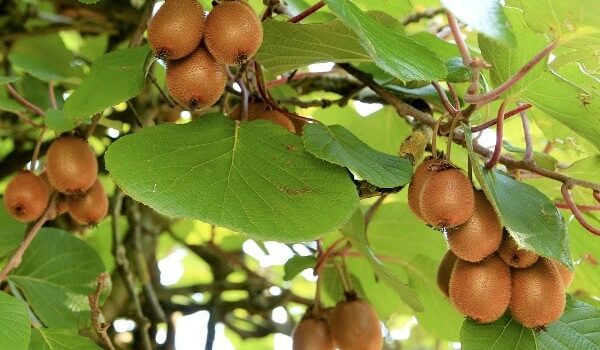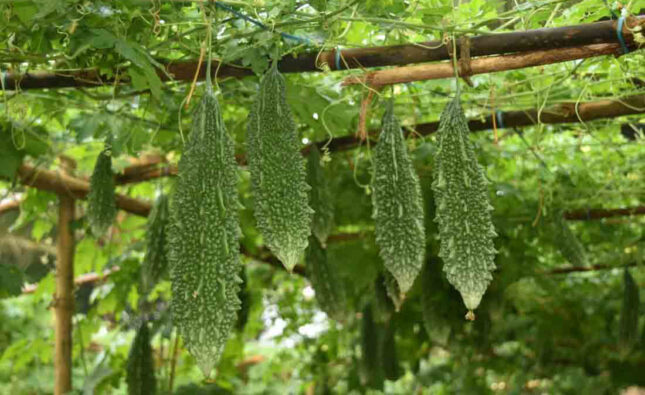Origin of Kiwi Fruit
The kiwi fruit, also known as the Chinese gooseberry, has its origin in China. It is believed to have been cultivated in the Yangtze River Valley for centuries. The fruit was initially known as the “Yang Tao” or “Mihou Tao” in China, which translates to “macaque peach” due to its resemblance to the monkey-like macaque fruit.
The fruit was introduced to New Zealand in the early 20th century when Mary Isabel Fraser, a schoolteacher, brought back kiwi seeds from China in 1904. The seeds were then planted and cultivated by Alexander Allison, a nurseryman in New Zealand. The fruit gained popularity in New Zealand, and it was initially referred to as the Chinese gooseberry. However, to market it more effectively, the name was changed to “kiwifruit” in the 1960s, inspired by New Zealand’s national bird, the kiwi. New Zealand became a significant producer and exporter of kiwifruit, and it became a recognized fruit worldwide. Eventually, kiwifruit cultivation expanded to other countries with suitable climates, including Italy, Chile, France, Greece, and the United States. Today, kiwifruit is grown and consumed in various regions across the globe, with New Zealand and Italy being the leading producers.
Kiwi Cultivation
Kiwi cultivation requires specific growing conditions to ensure optimal growth and fruit production. Here are some key considerations for kiwi cultivation:
- Climate:
Kiwi plants thrive in temperate regions with mild winters and warm summers. They require a chilling period during the dormant season, typically around 700 to 1,200 hours below 45°F (7°C) to break dormancy and stimulate fruiting. The optimal temperature range for kiwi growth is between 65°F and 85°F (18°C and 29°C) during the growing season.
2. Soil:
Kiwi plants prefer well-drained soil with a pH level between 5.5 and 7.0. The soil should be rich in organic matter and have good water-holding capacity. Sandy loam or loamy soil types are generally suitable for kiwi cultivation.
3. Variety Selection:
Choose kiwi varieties that are well-suited to your climate and growing conditions. Common commercial kiwi varieties include Hayward, Bruno, Monty, and Tomuri, among others. Consider factors such as fruit flavor, size, storage ability, and disease resistance when selecting varieties.
4. Planting:
Planting Time: Kiwi plants are typically planted in the spring when the soil has warmed up and the risk of frost has passed.
Spacing: Allow adequate spacing between plants to provide good air circulation and room for growth. Typically, kiwi plants are spaced about 15 to 20 feet (4.5 to 6 meters) apart.
Support Structures: Kiwi plants are vigorous climbers and require sturdy support structures, such as trellises or wires, to support their growth and fruit-bearing branches.
5. Irrigation:
Kiwi plants have high water requirements, especially during the growing season. Provide regular and consistent irrigation, ensuring the soil is evenly moist but not waterlogged. Drip irrigation systems are commonly used for efficient water management.
6. Fertilization:
Kiwi plants benefit from regular fertilization. Conduct a soil test to determine nutrient deficiencies and adjust fertilization accordingly. Generally, a balanced fertilizer with an NPK ratio of 10-10-10 or 14-14-14 is suitable. Apply fertilizers in split doses during the growing season.
7. Pruning and Training:
Proper pruning and training are essential for kiwi plants to maintain a manageable size, encourage airflow, and promote fruit production. Prune during the dormant season to remove dead or diseased wood and shape the plant structure.
8. Pest and Disease Management:
Monitor kiwi plants regularly for pests such as aphids, scale insects, and spider mites. Implement integrated pest management strategies and use appropriate insecticides or organic controls when necessary. Common diseases affecting kiwi plants include bacterial canker, fungal infections, and viruses. Practice good sanitation and employ disease-resistant varieties to minimize the risk of disease.
9. Harvesting:
Kiwi fruits are typically harvested when they reach maturity and have the desired sugar content. Harvesting time can vary depending on the variety and growing region. Kiwis are usually picked before they become soft, as they continue to ripen off the vine.
Health Benefits of Kiwi Fruit
Kiwi fruit is not only delicious but also offers a range of health benefits due to its rich nutritional profile. Here are some of the key health benefits associated with consuming kiwi fruit:
- High in Vitamin C: Kiwi fruit is an excellent source of vitamin C, which is important for immune function, collagen synthesis, and antioxidant protection. A single kiwi fruit can provide more than the recommended daily intake of vitamin C.
- Rich in Antioxidants: Kiwi fruit contains various antioxidants, including vitamin C, vitamin E, and polyphenols. Antioxidants help protect against oxidative stress and reduce the risk of chronic diseases by neutralizing free radicals in the body.
- Digestive Health: Kiwi fruit is a good source of dietary fiber, both soluble and insoluble. Fiber aids in digestion, promotes bowel regularity, and supports overall gut health.
- Heart Health: The consumption of kiwi fruit has been associated with improved heart health. It may help reduce blood pressure, lower cholesterol levels, and decrease the risk of blood clotting due to its high potassium content and other beneficial compounds.
- Eye Health: Kiwi fruit contains lutein and zeaxanthin, which are antioxidants known to support eye health. These compounds may help reduce the risk of age-related macular degeneration and promote healthy vision.
- Boosts Immunity: The high vitamin C content in kiwi fruit helps strengthen the immune system, supporting the body’s defense against common illnesses and infections.
- Skin Health: The combination of vitamin C and other antioxidants in kiwi fruit can help maintain healthy skin. These nutrients support collagen synthesis, protect against skin damage caused by free radicals, and promote a youthful complexion.
- Weight Management: Kiwi fruit is relatively low in calories and contains dietary fiber, which can help promote feelings of fullness and aid in weight management.

Sales and Marketing of Kiwi Fruit
To effectively market and sell kiwi fruit, consider the following sales and marketing strategies:
- Identify Target Market:
Determine your target market, which can include local consumers, grocery stores, restaurants, or wholesalers. Understand their preferences, demand, and purchasing habits regarding kiwi fruit.
2. Packaging and Presentation:
Invest in attractive and eye-catching packaging for your kiwi fruit. Use clear containers or boxes that showcase the vibrant green color of the fruit. Include labels or tags with key information such as the variety, origin, nutritional benefits, and handling instructions.
3. Pricing Strategy:
Set competitive and profitable pricing based on factors such as production costs, market demand, and quality of your kiwi fruit. Consider offering different pricing options, such as bulk discounts for larger quantities or promotional pricing during peak seasons.
4. Distribution Channels:
Establish effective distribution channels to reach your target market. Consider selling directly to consumers through farmers’ markets, roadside stands, or your own farm store. Partner with local grocery stores, restaurants, or specialty food retailers to expand your reach. Explore online platforms and e-commerce websites to reach a wider customer base.
5. Branding and Marketing Materials:
Develop a strong brand identity for your kiwi fruit. Create a logo, website, and marketing materials that highlight the unique qualities of your product. Use social media platforms to showcase your kiwi fruit, share recipes or health benefits, and engage with potential customers.
6. Promotions and Advertising:
Offer promotional campaigns to attract customers and generate interest in your kiwi fruit. This can include limited-time discounts, bundle deals, or partnerships with complementary products. Consider advertising in local publications, online platforms, or through targeted digital marketing campaigns.
7. Sampling and Demos:
Provide samples of your kiwi fruit at farmers’ markets, grocery stores, or food events to allow customers to taste the fruit’s unique flavor and experience its quality. Offer recipe suggestions and provide information about the health benefits of kiwi fruit.
8. Customer Relationship Management:
Build strong relationships with customers by providing excellent customer service. Respond promptly to inquiries and address any concerns or issues. Encourage customer feedback and use positive testimonials to promote your kiwi fruit.
9. Seasonal Marketing:
Leverage the seasonal availability of kiwi fruit to create marketing campaigns and promotions. Highlight the freshness and unique flavors of kiwi fruit during its peak season to generate increased interest and sales.
10. Collaborations and Partnerships:
Collaborate with local chefs, food bloggers, or influencers to feature kiwi fruit in recipes and content. Participate in food-related events, workshops, or festivals to showcase your product and engage with potential customers. Regularly evaluate and adapt your sales and marketing strategies based on customer feedback, market trends, and seasonality. Building a strong brand reputation and maintaining consistent quality are key factors in successfully marketing and selling kiwi fruit.






